Suffrage 100: The General Election December 1918
- 28th December 2018
The 1918 general election was called almost immediately after the armistice and was held on 14 December. Some felt that the election was rushed especially given the influenza epidemic and the fact that many of the male voters were still overseas. It was the first general election to be held after the new Representation of the People Act came into force so was the first election in which women could now vote.
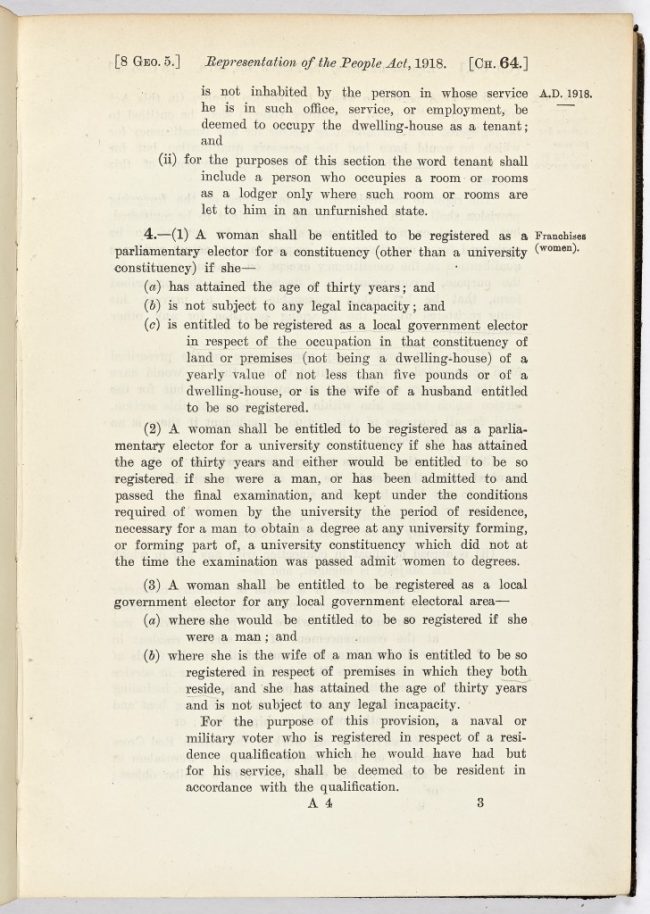
Page from Representation of the People Act 1918
The new voters
The passing of the 1918 Representation of the People Act had markedly increased the number of people who were eligible to vote. It was estimated that the size of the electorate had almost trebled. All men over 21 now had the vote. In previous elections some 40% of men had been unable to vote and the need to be resident in the country 12 months before a general election had also disenfranchised men serving with the armed forces overseas. Women over 30 who met property qualifications were now also eligible to vote.
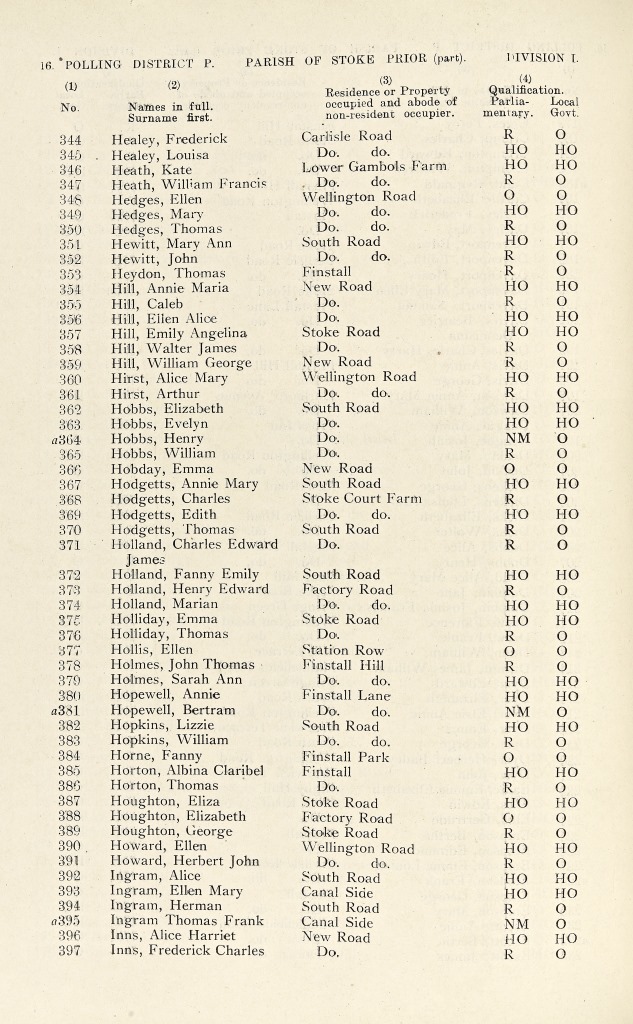
Page from an electoral register for 1918 showing the wider franchise and including ex suffragette Claribel Horton
The new electoral registers also included lists of those voters still absent overseas.
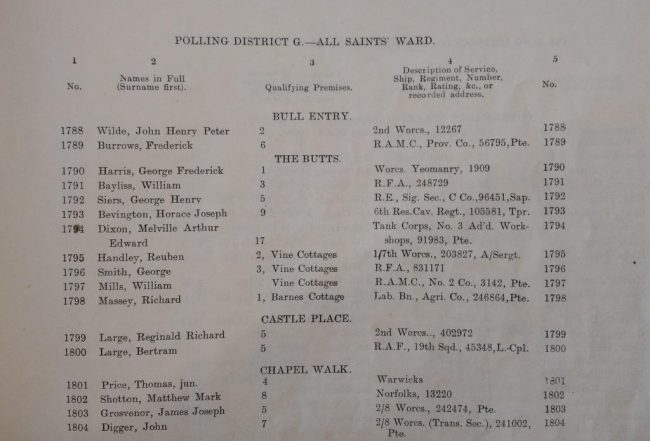
Absent voters list
Election Day
Much was made in the press of the new voters going to the poll for the first time. Many newspapers featured stories and pictures of women young and old, women on their own, with their menfolk and with families in tow exercising their right to vote. Lavinia Talbot recorded in her diary for 14 December that she voted en route to catching the train to Farnham. She noted that it was ‘a very quick and easy process.’
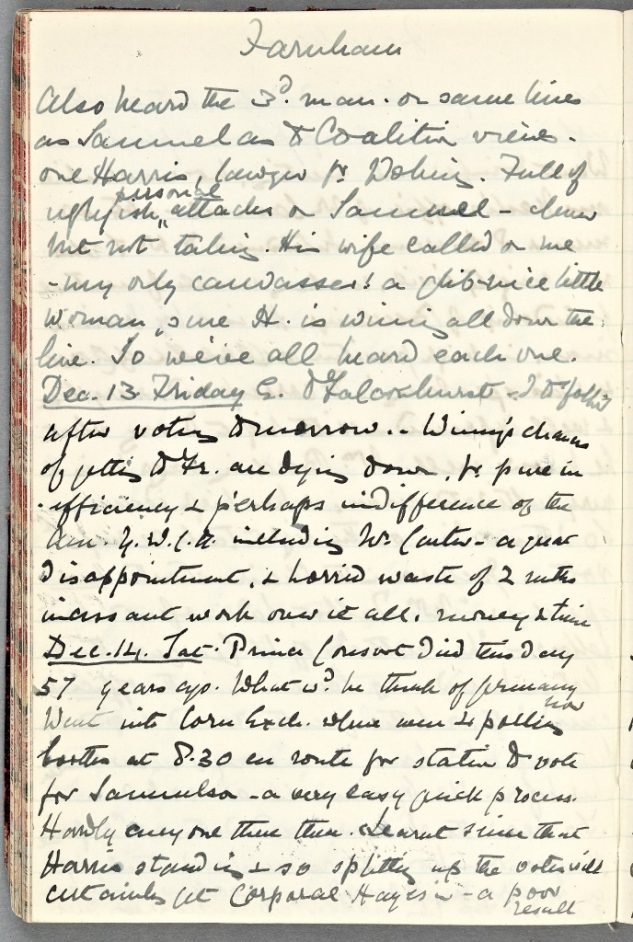
Page from Lavinia Talbot’s diary recording her being able to vote for the first time
The process of counting the vote was delayed until 28 December so that votes cast by soldiers serving overseas could be received and counted, hence the election being sometimes referred to as a ‘khaki’ election.
Those candidates who had supported Lloyd George’s coalition government during World War 1 were issued with a letter of endorsement (referred to as a ‘coupon’) from both Lloyd George and the leader of the Conservative Party Andrew Bonar Law. Where a ‘coupon’ Liberal stood, no Conservative candidate stood and vice versa, so that they did not compete against each other. This led to the election also being known as the ‘coupon election’. After an anxious wait for candidates over the festive period all the votes were counted. The result was a landslide victory for Lloyd George and his coalition Liberal and Conservative Party.
Women candidates
On 21 November 1918 the Parliament (Qualification of Women) Act had been passed enabling women to stand for the first time for election as Members of Parliament. The timing of the Act did not given women much time to organise themselves, but seventeen women stood for Parliament in the election. Many were ex suffragettes and suffragists such as Christabel Pankhurst and Emmeline Pethick-Lawrence but they also included Mrs Carruthers who before the War as Miss Violet Markham had campaigned against votes for women.
In Worcestershire trade unionist Mary Reid Anderson stood for the Stourbridge Division as a Labour Party candidate. As Mary Reid Macarthur she had previously led the women chain makers of Cradley Heath in a battle for better pay. Although at the polls 7835 people voted for her she lost out to the Liberal candidate J W Wilson by 1333 votes.
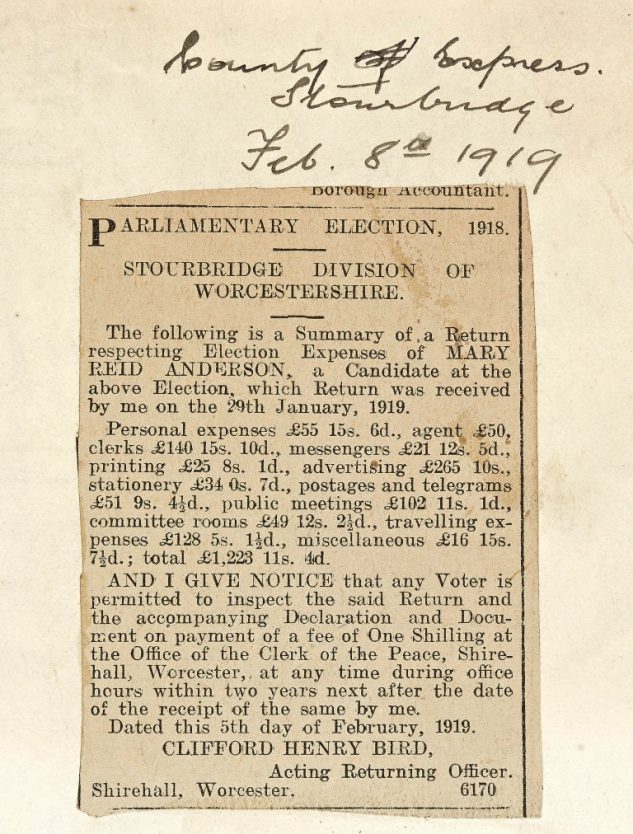
Newscutting re election expenses of Mary Reid Anderson 1919
All but one of the women candidates at the 1918 general election were defeated. The one successful candidate was Constance Markievicz who had stood in Dublin for Sinn Fein.
To find out more
There are many websites devoted to the right to vote and to particular election campaigns. In this 100th anniversary year of women getting the right to vote there are also sites featuring those women who stood in the 1918 election. For more information about the 1918 General Election and the women who stood check the following links:
- Wikipedia entry on the Representation of the People Act 1918
- Wikipedia entry on the 1918 United Kingdom general election
- Wikipedia entry on the election results of women standing for the Parliament of the United Kingdom (to 1945)
- Evening Standard article looking at women obtaining the right to stand as MPs
- Museum of London feature on the Vote for Women: the groundbreaking election of 1918
- Wikipedia entry on Mary Macarthur
Post a Comment